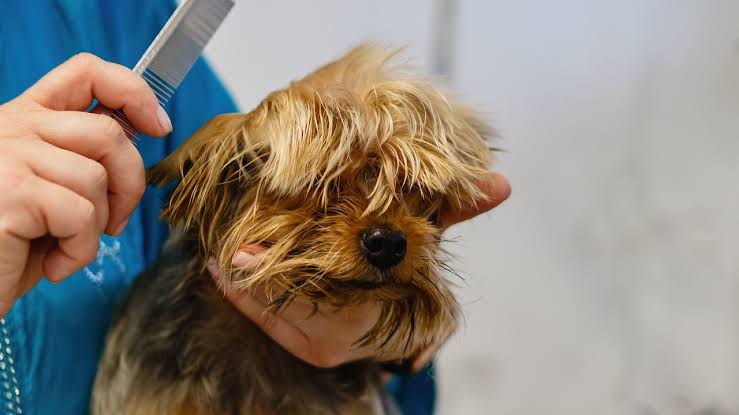Taking care of your pet isn’t just about love and playtime—it also means keeping them clean, healthy, and feeling good. In 2023 alone, Americans spent over $9.5 billion on pet care services like grooming, according to the APPA. That’s not just about vanity. Grooming matters. It supports comfort, health, and daily hygiene. Whether you’re brushing a cat or bathing your dog, having the right pet grooming essential tools can make all the difference.
This guide walks you through the must-haves that every pet parent should have on hand—and how each tool supports a healthier, happier animal.
Why Grooming Deserves a Spot in Your Routine
Grooming is about more than shiny fur. Done right, it helps:
- Catch health problems early
- Prevent matting, skin issues, and bad smells
- Reduce loose fur all over your home
- Build trust between you and your pet
Keeping up with grooming at home means fewer vet visits and happier snuggles.
1. Brushes and Combs: Your Grooming Starter Kit
Every grooming routine starts here. A good brush is one of the top pet grooming essentials.
Choose the Right Brush:
|
Brush Type |
Best For |
Why It Works |
|
Slicker Brush |
Long, thick coats |
Tackles mats and tangles |
|
Bristle Brush |
Short, smooth coats |
Helps spread natural oils |
|
Pin Brush |
Medium-length coats |
Gentle, all-purpose option |
|
Deshedding Tool |
Heavy-shedding pets |
Pulls loose undercoat fur |
Helpful Tips:
- Brush twice a week (more for long coats).
- Use a detangling spray to avoid painful pulls.
2. Nail Clippers or Grinders: Keep Paws Healthy
Nails that get too long can hurt your pet or change how they walk. That’s why trimming them is a pet grooming essential.
Options:
- Guillotine Clippers – Great for small pets
- Scissor Clippers – Better for bigger dogs
- Electric Grinders – Smooth edges without splintering
Helpful Tips:
- Trim after bath time when nails are soft
- Keep styptic powder nearby in case you cut too close
3. Shampoo & Conditioner: The Right Products Matter
Bath time helps remove dirt, odors, and allergens. Picking the right formula protects your pet’s skin.
Look for:
- Hypoallergenic options for sensitive pets
- Medicated formulas for fleas or irritation
- Conditioners to keep long coats smooth
Helpful Tips:
- Never use human shampoo—it can dry out your pet’s skin
- Most pets only need a bath every 4–6 weeks unless directed otherwise
4. Ear Cleaners: Don’t Miss This Detail
Ear care often gets skipped, but dirty ears can mean infections or discomfort.
What You’ll Need:
- Pet-safe ear cleaning solution
- Cotton pads (avoid Q-tips—they can do more harm than good)
Helpful Tips:
- Clean weekly for floppy-eared breeds
- Redness or odor may mean an infection—call your vet
5. Toothbrush & Toothpaste: Keep That Smile Healthy
Good dental care is a major pet grooming essential. More than 80% of dogs have dental issues by age three.
What to Use:
- Pet-specific toothbrush
- Enzymatic pet toothpaste (never use human kind)
Helpful Tips:
- Start slow—use your finger to get them used to brushing
- Add dental chews or wipes for extra support
6. Grooming Wipes: Great for Quick Fixes
Wipes help between baths. They’re ideal for cleaning paws, fur, or around the eyes.
Look for:
- Alcohol-free formulas
- Hypoallergenic ingredients
- Gentle enough for face and paws
Helpful Tips:
- Keep a pack in your car
- Wipe your pet’s paws after walks to cut down on tracked dirt
7. Clippers and Trimmers: For At-Home Touch-Ups
If you want to do home haircuts or keep up between groomer visits, clippers are key.
What to Look For:
- Quiet motor (especially for nervous pets)
- Cordless design for flexibility
- Adjustable blades
Helpful Tips:
- Always go slow and start small
- Use guards for even length
8. Grooming Table: Control and Safety
This is a good investment if you have a large dog or a squirmy one.
Why It Helps:
- Keeps pets in place
- Makes grooming less stressful for both of you
- Raises pets to a more comfortable height
Helpful Tips:
- Choose a non-slip surface
- Foldable tables save space
9. Shedding Tools: Keep Hair Under Control
These are must-haves for dogs or cats who drop fur like crazy.
Benefits:
- Help reduce fur buildup in your home
- Pull loose hair from the undercoat
- Great for allergy control
Helpful Tips:
- Use more often during spring and fall
- Combine with weekly brushing
10. Apron and Gloves: Protect Yourself Too
Don’t forget about your comfort. Wearing the right gear keeps you clean and gives you a better grip.
Why You’ll Love Them:
- An apron keeps clothes dry
- Rubber gloves improve your hold on wet fur
- Less mess, less stress
11. Grooming for Different Breeds: One Size Doesn’t Fit All
Here’s something many pet parents don’t realize right away: not all coats—and not all grooming needs—are the same. And knowing your pet’s breed-specific needs? That’s a serious pet grooming essential.
Take a double-coated pup like a Husky or Golden Retriever. You’ll need to brush more often and use tools designed to get deep into that thick undercoat. Short-haired dogs like Beagles? They shed too, just differently, and do best with regular brushing to keep oils balanced and shedding down. Got a curly-coated pal like a Poodle or Bichon? You’ll want to stock up on detangling sprays and clippers that won’t pull at tight curls. Cats? A fluffy Persian will need almost daily brushing, while a shorthair may only need an occasional once-over.
Even behavior plays a role. If your pet is sensitive to sound, quieter grooming tools or manual nail files can be a game-changer. Hates water? Try waterless shampoos or wipes instead.
Bottom line: understanding your pet’s coat, comfort level, and sensitivities isn’t just being thoughtful—it’s a core pet grooming essential that helps you groom smarter, not harder.
12. Establishing a Routine: The Secret to Less Stress
Grooming doesn’t have to be a dreaded chore—for you or your pet. In fact, building a simple, consistent routine is one of the most overlooked pet grooming essential practices out there.
Why does it matter? Pets love predictability. If you brush them on the same day each week or give them a treat after every nail trim, they start to understand what’s coming. Over time, that predictability creates calm. And calm makes everything easier.
Start small: introduce brushing with a favorite treat nearby. Use a soft voice. Pick grooming “check-in” days—like brushing on Wednesdays and nail trims every other Saturday. Soon, your pet will actually start tolerating (or maybe even enjoying) the process.
And beyond just reducing stress? A consistent routine helps you notice early signs of trouble. You’ll catch that bump, rash, or chipped nail faster. And you won’t accidentally skip essentials like ear cleaning or brushing those back teeth.
So if you’re looking to make grooming easier for everyone involved, this is it. A routine isn’t just helpful—it’s a real pet grooming essential that builds trust, connection, and better care.
Conclusion
Grooming is about more than keeping your pet pretty. It keeps them healthy, clean, and feeling good. With the right pet grooming essential tools—from brushes to nail trimmers—you can handle most of the care your pet needs at home.
At Ultimate Empire K9, we’re here to help every step of the way. Whether you need a full kit or just a single tool, we’ve got your back. Groom with confidence—and give your pet the care they deserve.
Ready to Get Started? Looking for advice or want to upgrade your tools? Ultimate Empire K9 in the Waterford area has grooming gear that fits real pet needs. Reach out to our team for help picking the right supplies or confidently starting your grooming routine.
FAQs
1. How often should I groom my pet?
It depends on the breed and coat. Dogs usually need grooming every 4–8 weeks. Brushing should happen weekly or more often.
2. Can I use human brushes or shampoos?
No. Human products can damage a pet’s skin or fur. Always go with pet-safe tools.
3. When should I start grooming my puppy or kitten?
As early as 8 weeks. Starting young builds comfort with grooming routines.
4. Should I groom at home or go to a pro?
Both are good. Pros give deeper care. Home grooming helps you stay on top of things between visits.
5. What’s the easiest tool to begin with?
Start with a basic slicker brush and grooming wipes—they’re easy to use and help with everyday upkeep.



































